Porsche 918 Spyder
If you thought that the terms ‘supercar’ and ‘efficiency’ don’t go together, think again! Porsche’s 918 Spyder combines maximum
If you thought that the terms ‘supercar’ and ‘efficiency’ don’t go together, think again! Porsche’s 918 Spyder combines maximum performance with minimum consumption. We tested this hybrid supercar at the Vairano track in Italy, and found that it’s simply jaw dropping – to say the least.
For a car so futuristic, the Porsche 918 Spyder lets you get inside it in a rather traditional manner. You need a key to open the door. You see, the 918 is all about moulding high-tech motor racing technology with everyday utility. This is clearly Porsche’s super sports car for the next decade – with a highly efficient and powerful hybrid drivetrain.
Developed from scratch, the 918 Spyder showcases the potential of the hybrid drive to a degree never seen before – the simultaneous improvement of both efficiency and performance, without one being at the cost of the other.
3 POWER UNITS BECOME ONE
Despite its astronomical price tag, don’t be surprised if the interiors are not particularly luxurious. Bear in mind that this is a hybrid that doesn’t compromise the sportiness of a Porsche flagship – so everything has been designed from the perspective of functionality and light weight.
Once you’re in the drivers’ seat, it takes only a few minutes to become familiar with the three main instruments. On the central console, there are all the functions that you need when you’re traveling in traffic – air conditioning, infotainment, and navigation. The maps run on a screen mounted above the center console that has excellent visibility. On the move, the V8 and the electric motors remains largely quiet behind the driver. The 918 does reveal some element of ‘rawness,’ which is typical in a car that’s constructed in carbon fibre – it’s a mix of micro-vibrations and noise, which can be a little annoying, but it’s not something that’ll trouble an enthusiast much.
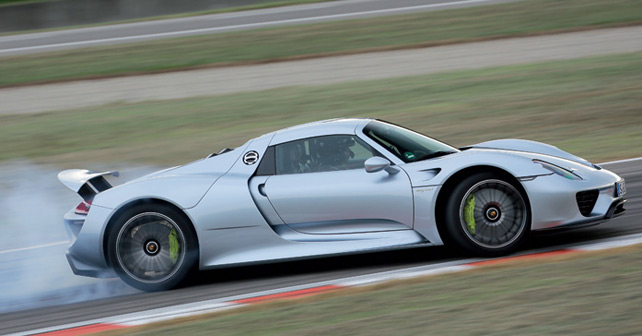
The ‘map switch,’ under the right hand side of the steering, does a great job. On the basis of this pre-selection, the 918 Spyder applies the most suitable operating and boost strategy without driver intervention – which allows the driver to concentrate fully on the road. As you turn the map switch, the electric motors and the V8 exchange their roles. In the more efficient positions (pure electric and hybrid), the petrol engine steps in only if the electronic horsepower isn’t enough, while in Sport and Race modes the eight-cylinder engine becomes the star – with the electric motors ready to intervene to boost power. Then, the music changes in the true sense of the word as the racing origin of this V8 becomes evident. You would expect the character of a naturally aspirated engine, with the keenness of a turbocharged one. But it’s more than that.
Normally, with the turbocharger, even when it’s very well designed, a fraction of a delay in response is expected. But, in the 918, as soon as you press the accelerator pedal, the response from the electric motors is instantaneous. And these three engines interact with each other so well that it feels as if there’s just a single engine at work. It all just seems impossible? These results are mindboggling, even if you have some familiarity with supercars.
With the (very loud) exhausts just a few centimetres from the ear drums of the occupants, the 918 is capable of indescribable acceleration. From a stationary position, with ‘Launch Control’ engaged, the electronics ensure minimum wheel-spin, but the feeling is almost that of a car clinging to its wheels – as if they were on a rack gear. And the rest is because of the PDK gearbox. The car rockets from 0-100km/h in just 2.56 seconds. But the 918 isn’t a dragster, so the overall result is a pleasing mix of many other features.
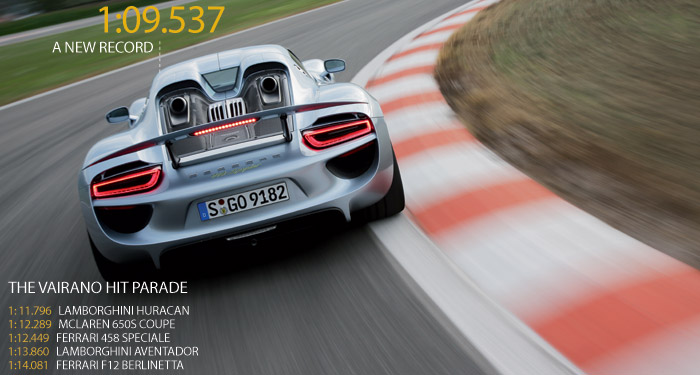
IMMEDIATE AND SINCERE
For example, the ability to make people forget about its mass completely. The hybrid components weigh over 300kgs – bringing the total weight to over 1,800kgs. A lot, for a hyper car of this calibre, and the challenge is evident while driving it.
The 918 is a great car, even when pushed very hard on the track. It seems to carry only a ton-and-a-half of weight around. But, of course, it seems lighter – everything has been designed and mounted in the right place, starting with the battery pack behind the seats. And that’s why the direction changes are fast, precise, and immediate. The rear-wheel steering makes cornering even more direct. You turn the steering, and the 918 responds faster, and with more precision. Naturally, it reduces the amount of input required from the wheel. Porsche may have made this car as safe as possible, but it’s not a car for beginners. After all, it does require some skill to handle a vehicle with 600bhp.
Everything happens at a faster rate than in any other car. But, if you are as fast as needed, the 918 pays off instantly. No sudden and unexpected reaction, no need to change direction too much with the rear wheels – it just requires the right trajectory.
You get the feeling of pure bliss while driving this Porsche, without the desire to test yourself like the scary GT2. With the help of the (impressive) aerodynamics, the carbon-ceramic discs provide amazing braking. But the brake pedal doesn’t have the same level of perfection and consistency found in other cars from Zuffenhausen. It is very hard to find any similarities with a Prius, for instance, even though they’re both hybrid cars. Well, perhaps the brakes! As soon as you push the brake pedal, first the electric motors leap into action – only after that does the traditional braking system take over. This transition from retardation using the electric motors to the traditional braking system is, at times, not as smooth as it should be. Having said that, as you become more familiar with it, and more sensitive to its operations, it’s no longer much of an issue.
THE BIG NUMBERS
The 918 set many records at Vairano. It showed remarkable results, both in acceleration and braking. 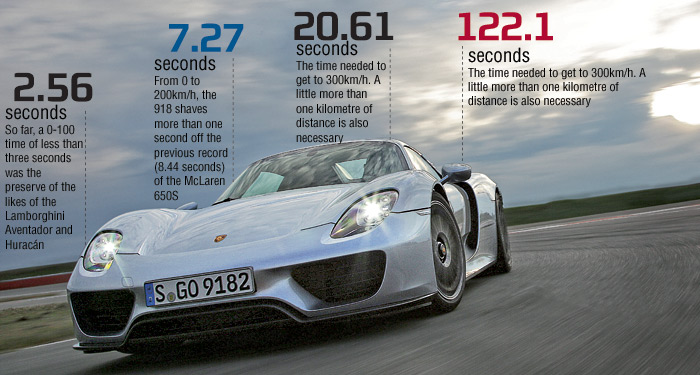
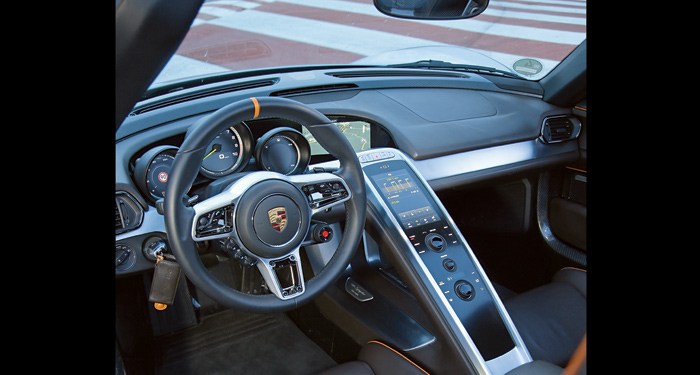 The wide and inclined tunnel, born with the Carrera GT, is home to the secondary controls. Whatever is required for driving is in front of the driver’s eyes, starting with the Map switch – the round switch just below the right-hand side of the steering. By turning it, you can toggle between E-Power, Hybrid, Sport Hybrid, and Race Hybrid. With the little red button in the centre, you can activate the most dynamic setting quickly and evocatively – it’s called ‘Hot Lap’
The wide and inclined tunnel, born with the Carrera GT, is home to the secondary controls. Whatever is required for driving is in front of the driver’s eyes, starting with the Map switch – the round switch just below the right-hand side of the steering. By turning it, you can toggle between E-Power, Hybrid, Sport Hybrid, and Race Hybrid. With the little red button in the centre, you can activate the most dynamic setting quickly and evocatively – it’s called ‘Hot Lap’
NO DOUBT: IT WINS
THE VAST SUPPLY of horsepower, all-wheel drive, the chassis balance. With these qualities, the 918 didn’t take long to set a new record – creating a vacuum behind it, as the next in line comes more than two seconds later. Following its green soul, we tried the E-Power mode as well. The result was 1:21.75 – more or less the same time as the Lotus Elise S.

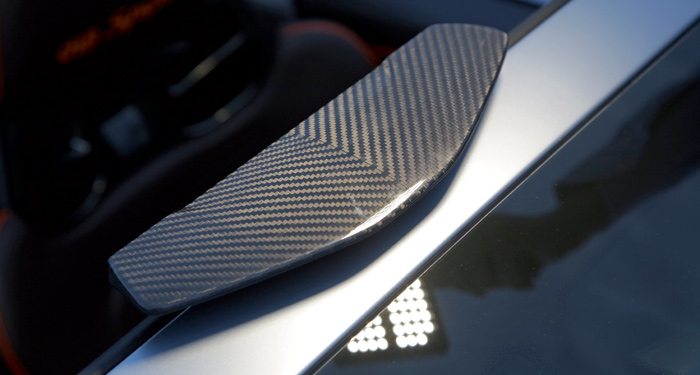 When open, a deflector on top of the windshield creates a flow of air that passes over the hood and prevents the heat and the exhaust gases to flow back towards the passenger compartment
When open, a deflector on top of the windshield creates a flow of air that passes over the hood and prevents the heat and the exhaust gases to flow back towards the passenger compartment
BETWEEN PERFORMANCE AND EFFICIENCY
 SPECIFICATIONS
SPECIFICATIONS
Engine
• Rear longitudinal, petrol
• 8-cylinder V8 (90°)
• Displacement: 4,593cc
• Maximum power: 600bhp @ 8,700rpm
• Maximum torque: 540Nm @ 6,700rpm
• Rear electric motor output: 156bhp
• Front electric motor output: 129bhp
• Total system power: 885bhp @ 8,500rpm
• Transmission
• Rear-wheel drive / all-wheel drive
• 7-speed PDK transmission
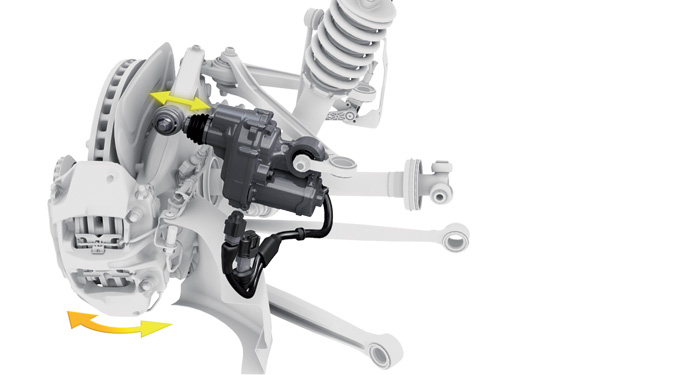
Tyres
• Front 265/35 ZR20 95Y
• Rear 325/30 ZR21 104Y
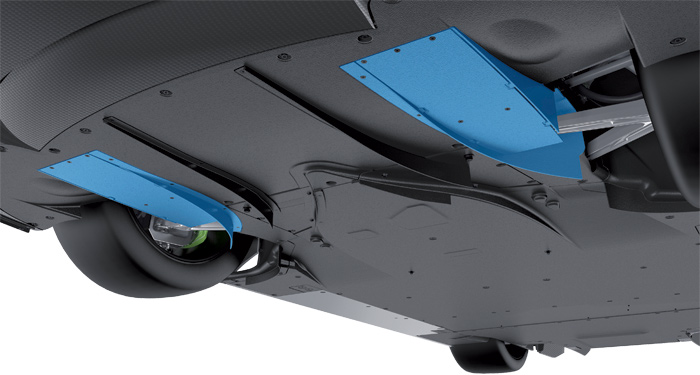 Body
Body
• Spider, 2 doors, 2 seats
• Front axle wishbone, coil spring, stabilizer bar
• Rear axle, multi-link coil spring, stabilizer bar
• 4-wheel steering
• Shock absorbers with electronic control
• Carbon-ceramic disc brakes, ABS and ESP
• Speed sensitive power steering, electric servo
• Fuel tank: 70 litres
• Lithium-ion battery of 6.8kW (385V)
Dimensions and mass
• Wheelbase: 2,731mm
• Front track: 1,664mm, Rear: 1,613mm
• Length: 4,646mm – Width: 1,941mm – Height: 1,167mm
• Weight: 1,674kgs
Produced in
• Zuffenhausen (Germany)
Porsche engineers admit that their biggest challenge was to make the entire mechanism work in unison – after all, the car is run by 55 different control units. One of the main guidelines of the project, of course, was the search for maximum efficiency – in which its lightness plays a crucial role. The carbon fibre body weighs a little more than 200kgs, including the front rails and the support for the suspension and engine. Derived from the RS Spyder (which we saw a few years ago at Le Mans in the LMP2 category), the engine is a naturally aspirated V8 with great lightness and strength – 135kgs for 600 horsepower (at 8,700rpm). Its ‘racing origins’ are also evident in the exhaust system – the top pipe restricts the hot zone to inside the V, with the air intake on the outside. This leaves the lower portion of the engine compartment relatively cool – and this is where the 6.8kWh battery pack lies (with a peak power of 230kW). With 1.7kW/kg, it’s a battery with the highest power density available. Since it’s a plug-in hybrid, the battery can be recharged by connecting it to a power outlet – with a charging time of just under four hours (using a common home outlet) to just 25 minutes (using a quick charging station).
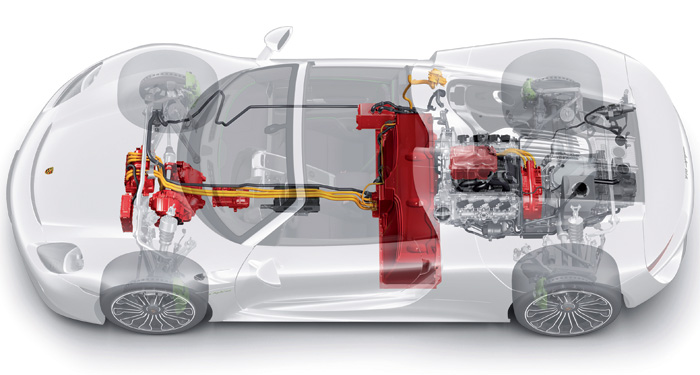
There are two electric motors – one at the rear axle, which has 156 horsepower keyed into the gearbox, so that it can operate the rear axle in perfect harmony with the V8 petrol engine. At the front, there’s a 129 horsepower motor with a single gear ratio, and a clutch to turn it off when speeds exceed 265km/h. Performance-oriented customers of the 918 can opt for the Weissach package, which lowers the weight by 41kgs. The roof, the rear wing, the exterior mirrors and the windshield frame are all made out of carbon fibre, and, thanks to the magnesium wheels, the unsprung weight is decreased by 14kgs. All the rest are small refinements. For instance, the bearings inside the wheel are made of ceramic (instead of steel). The screws are made of titanium, and the 918 can be equipped in the colours of the legendary Porsche race cars of yesteryear – with the paint replaced by a film to reduce weight.
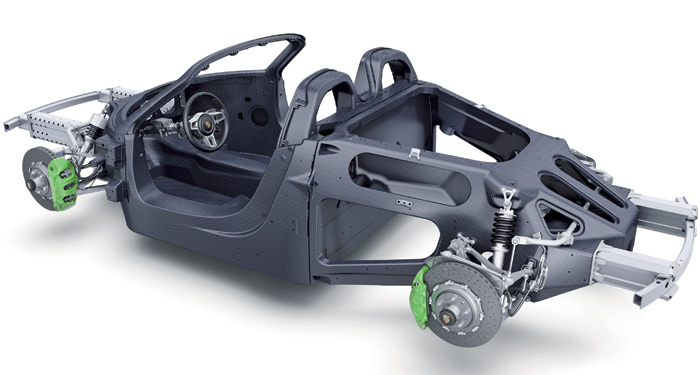 The carbon-ceramic discs are assisted by the electric motors during braking, and the motors themselves can generate up to 0.5g’s in deceleration
The carbon-ceramic discs are assisted by the electric motors during braking, and the motors themselves can generate up to 0.5g’s in deceleration
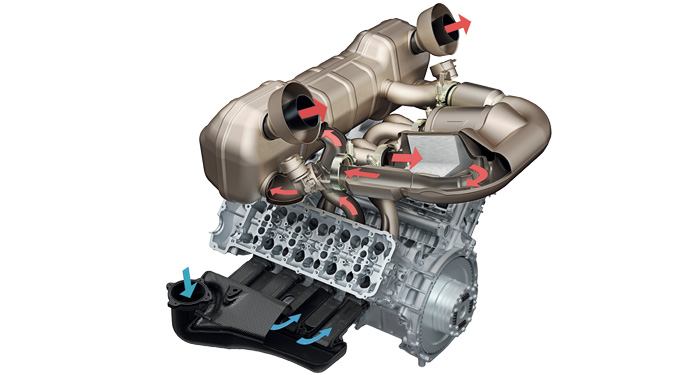 The exhausts are truly unique, and provide multiple benefits. With the so-called top pipe, it has an optimal management of heat and reduction of backpressure. Plus, the sound is better as well
The exhausts are truly unique, and provide multiple benefits. With the so-called top pipe, it has an optimal management of heat and reduction of backpressure. Plus, the sound is better as well
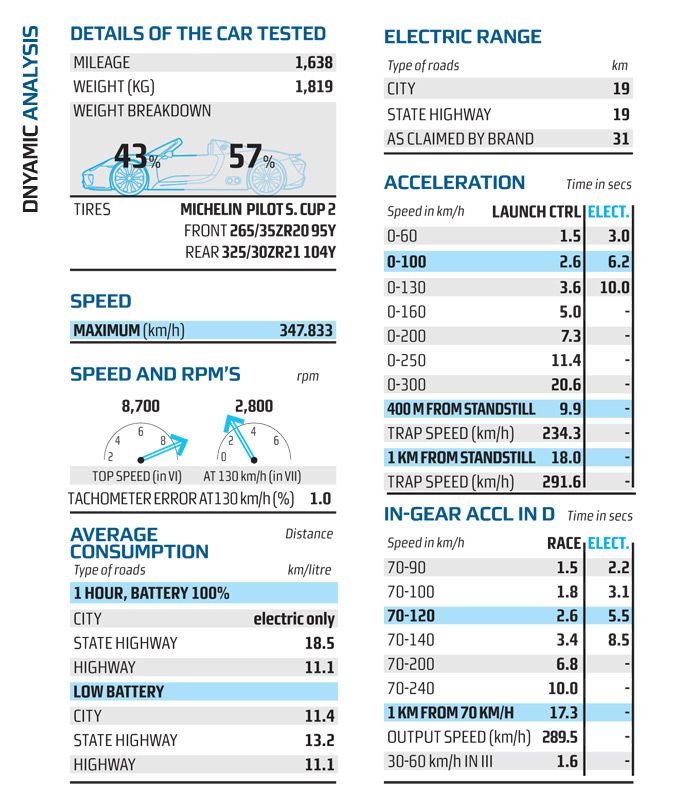
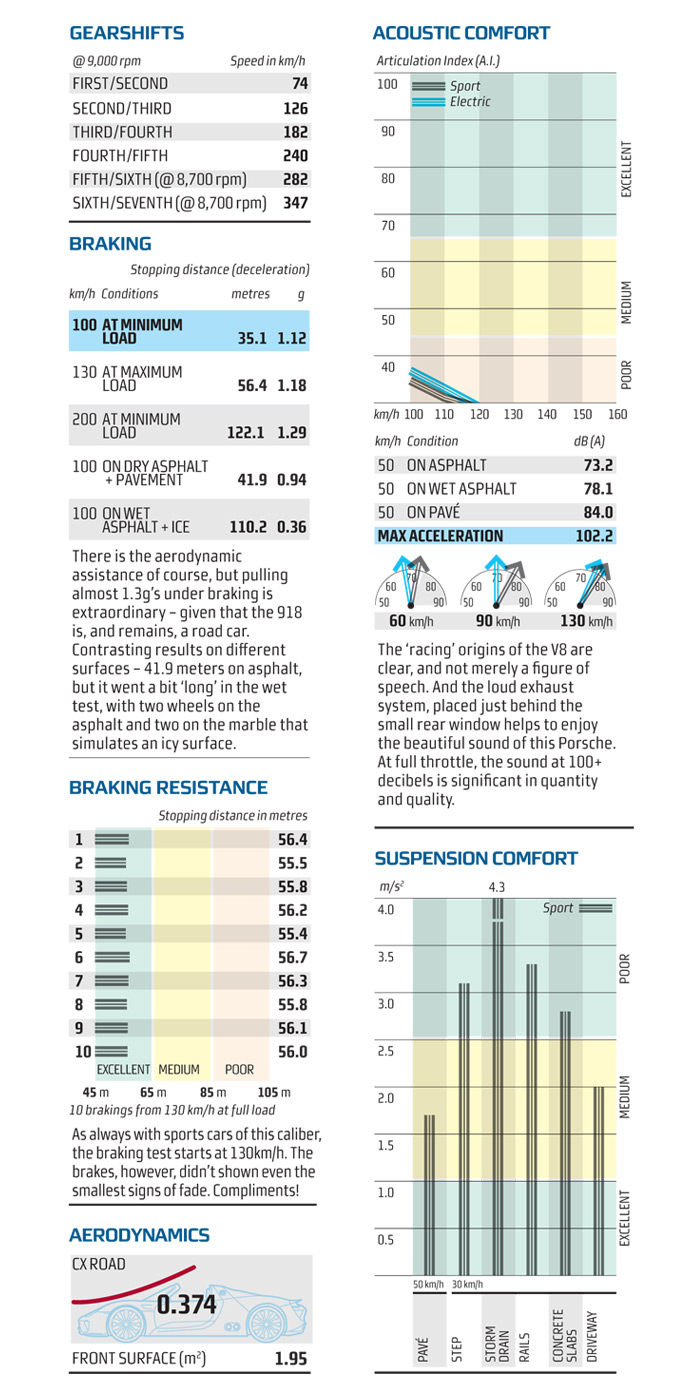
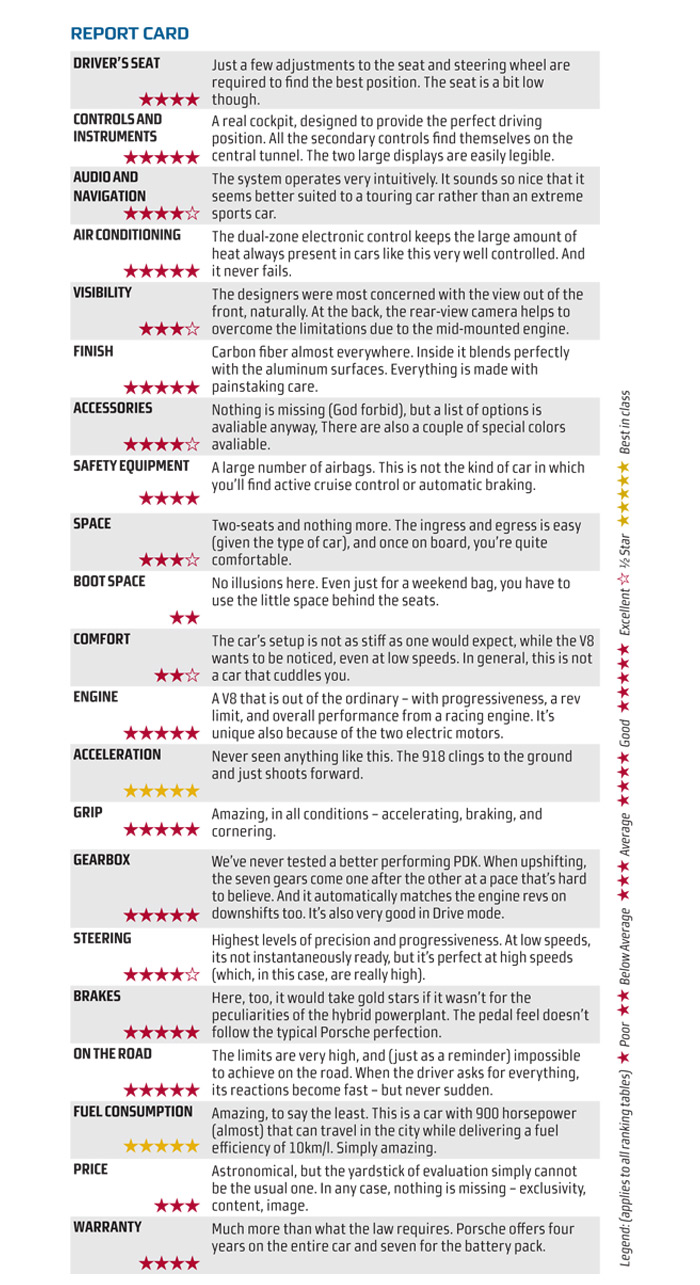
+ STRENGTHS
Performance. Horsepower at will, with a chassis that transmits this power to the ground seamlessly. We expereinced extraordinary levels of performance that we’ve never experienced before.
Efficiency. It’s amazing how such extraordinary performance can co-exist with such low fuel consumption.
- WEAKNESSES
Sensitivity of the brakes. The numbers are incredibly good. However, at the brake pedal, one can feel the transition from the initial braking by the electric motors to the traditional sytem.
Rear visibility: The rear-view camera is excellent, however, you still have to be careful to pay attention to your surroundings.
IN SUMMARY
So, is it really worth it to break the bank for the 918 Spyder? You have to remember that the standard parameters to evaluate a car simply don’t apply to the 918. The price tag mainly reflects the obsessive commitment to push the boundaries of technology to their limits. Simply put, cars like this cannot be made everyday. In fact, the 918 was born exactly ten years after its predecessor – the Carrera GT.
The 918 amazes us with impressive numbers (acceleration, braking, etc.), but then you expect nothing less from Porsche. What nobody would have imagined is that all this could co-exist in one single car – that all this performance could also yield low fuel consumption. That is what takes this hyper car to the next level.
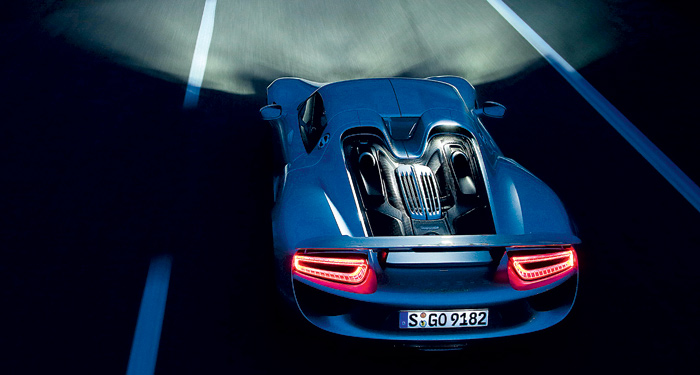
© Riproduzione riservata
Engine: Petrol 4,593cc
Max Power: 600 bhp
Power Unit: Petrol engine + 2 electric motors
Total power: 885 bhp
Claimed Fuel Consumption: 32.3 km/l
Tested Fuel Consumption: 22.0 km/l
Competitors: Ferrari LaFerrari McLaren P1
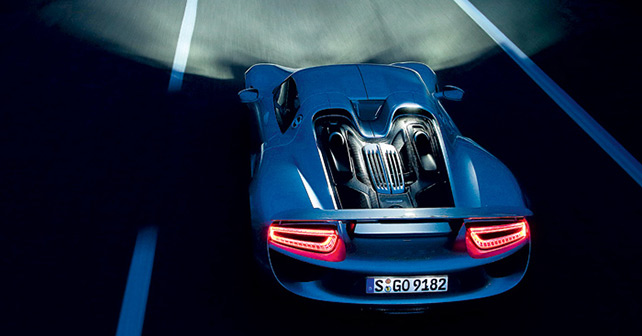
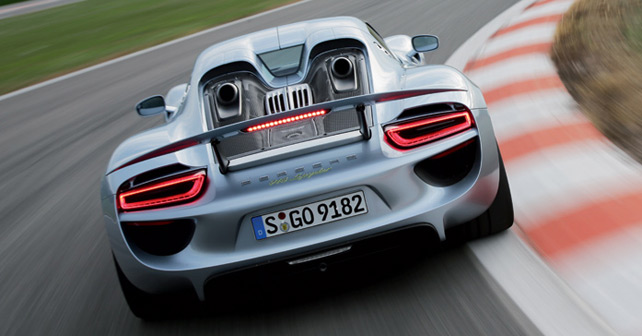
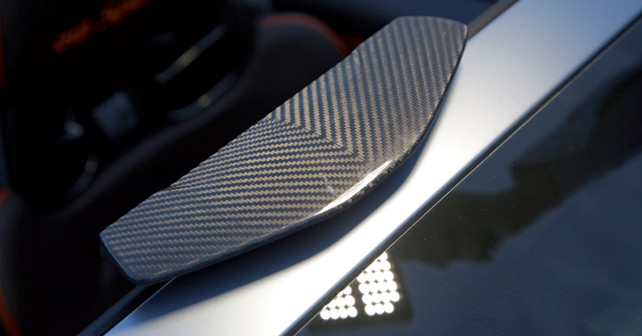
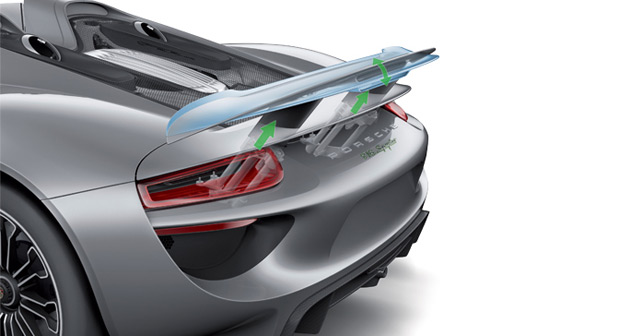
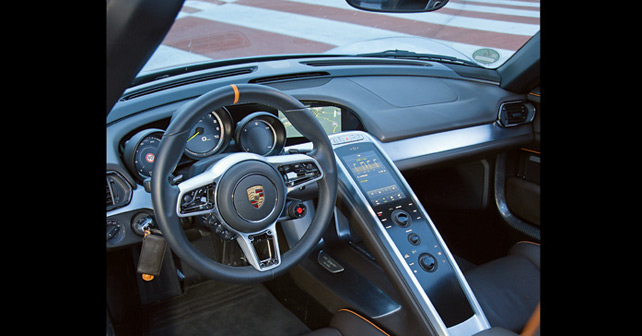
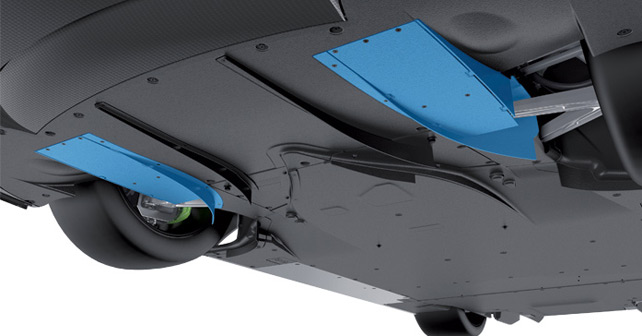
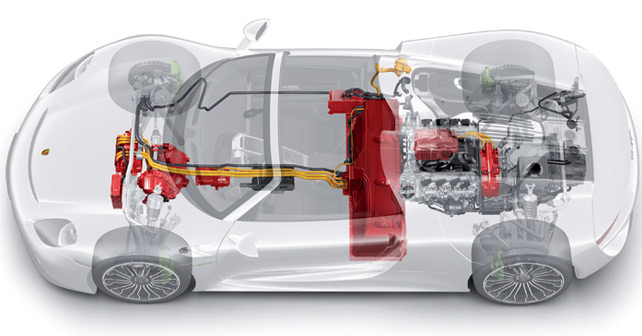
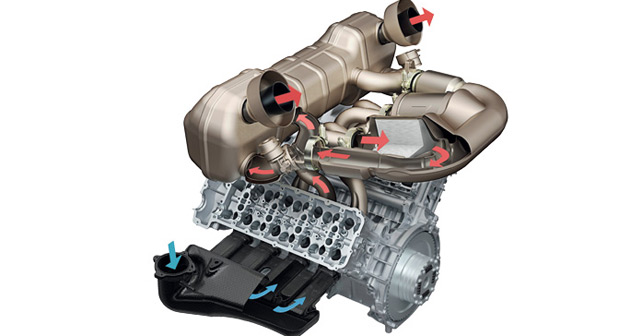
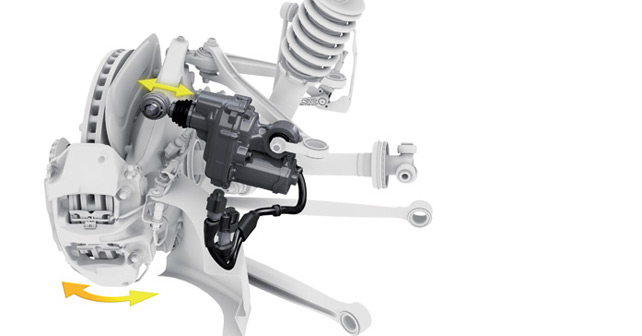
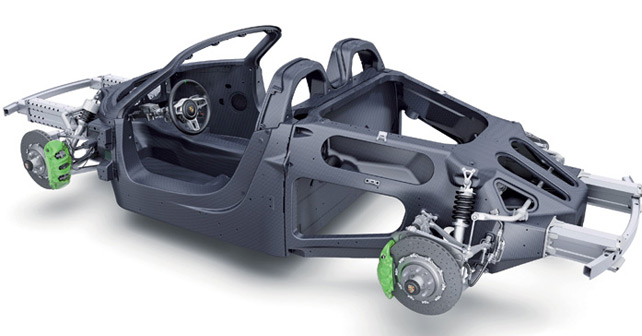

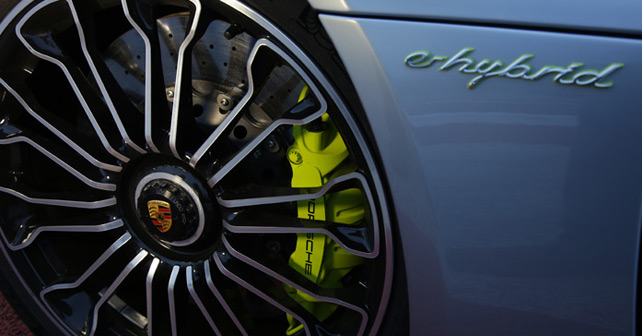
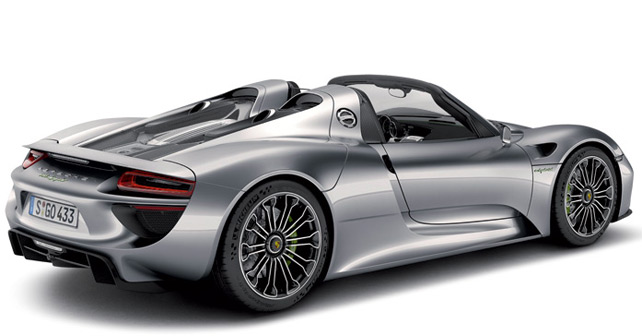

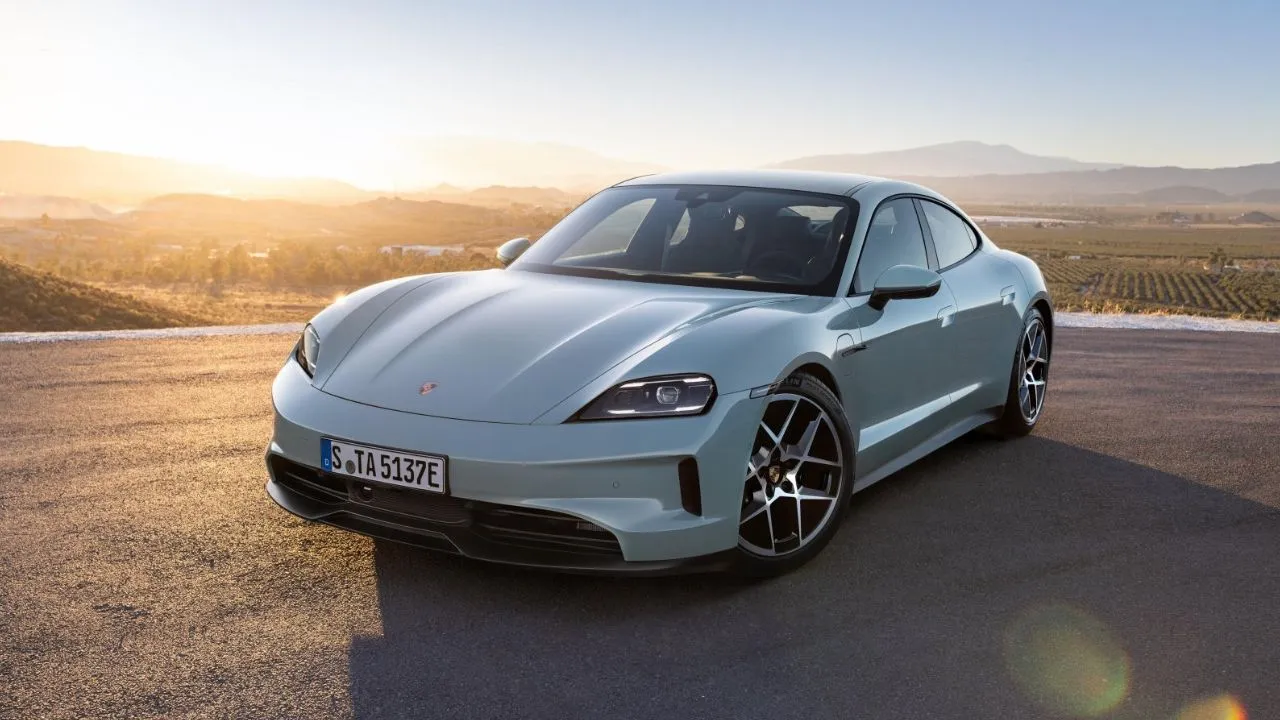
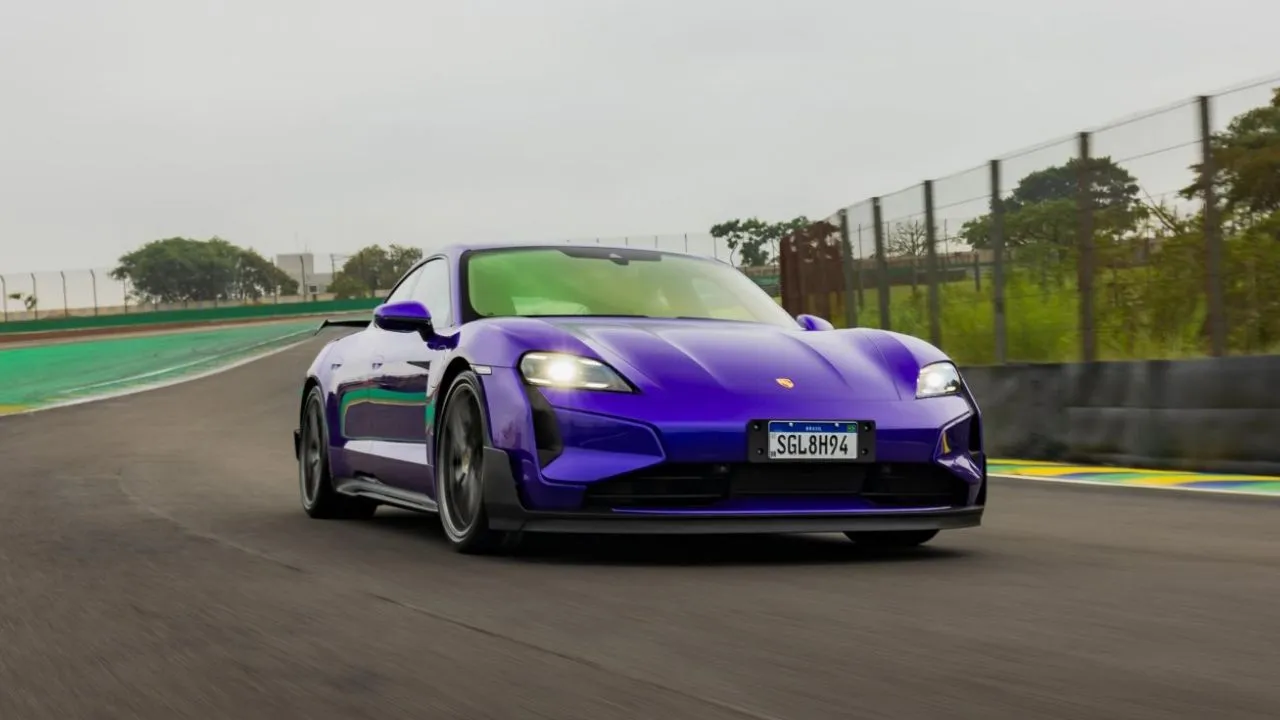
.webp)

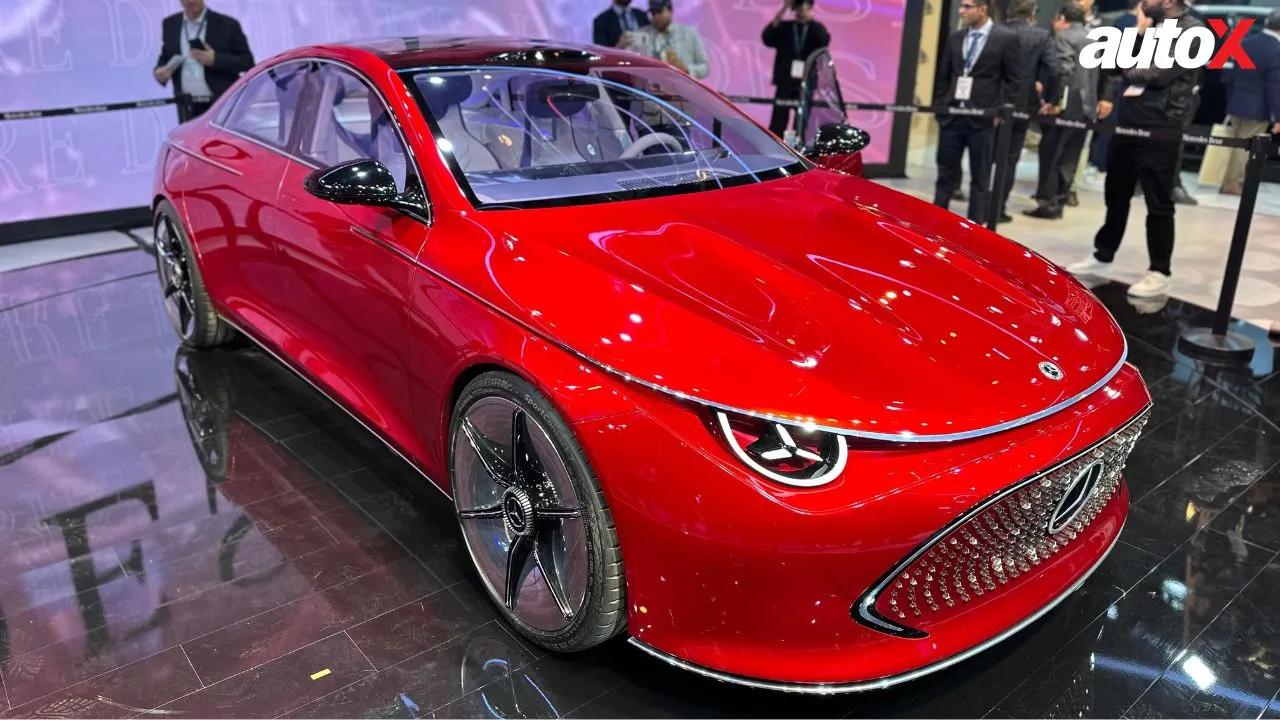
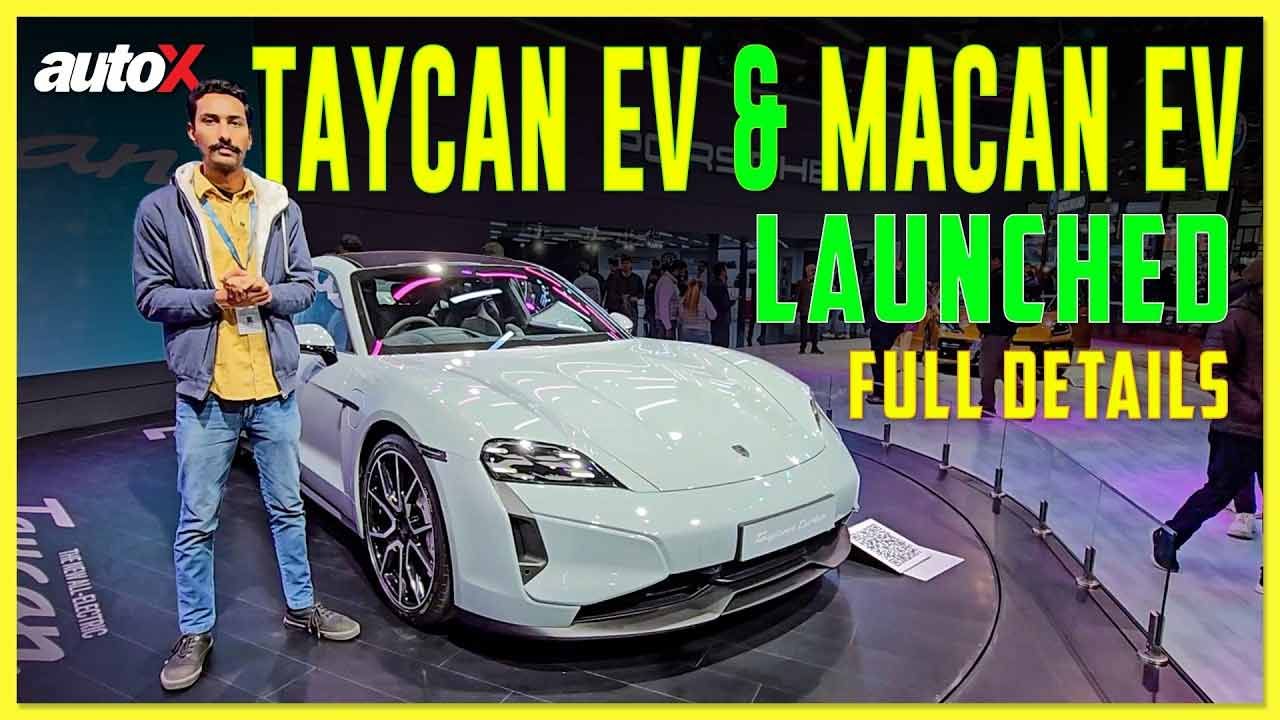





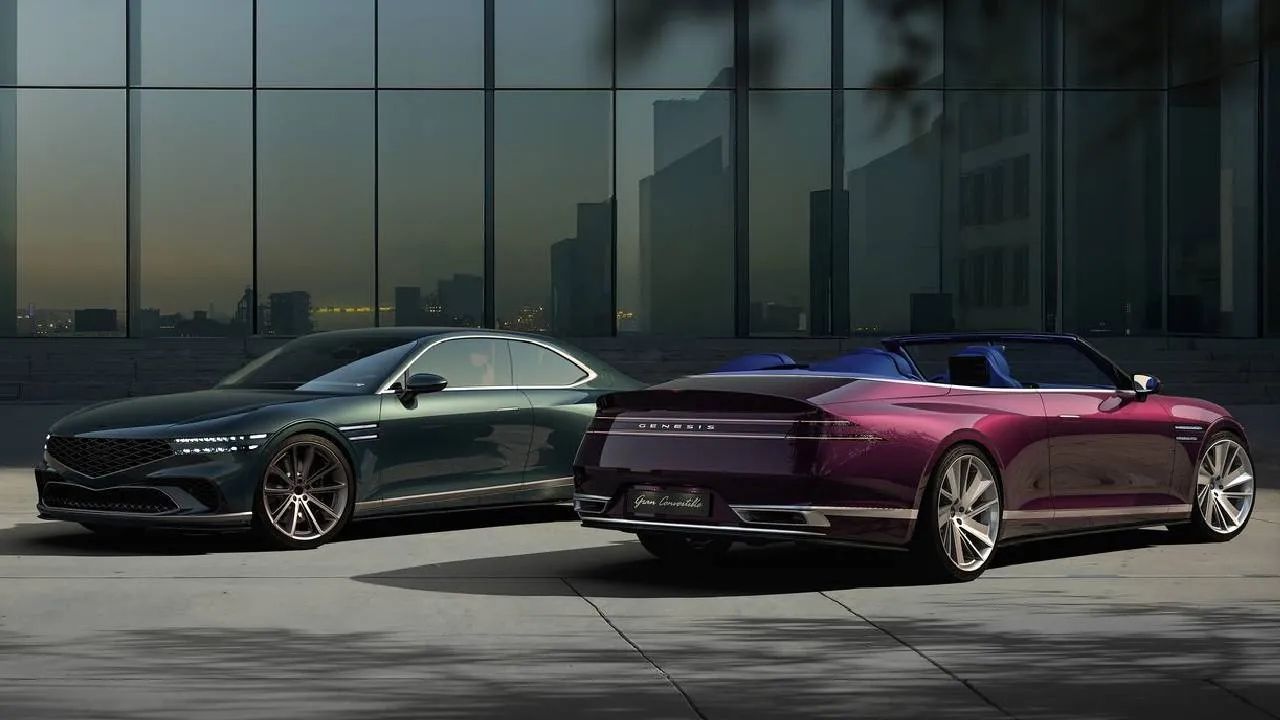

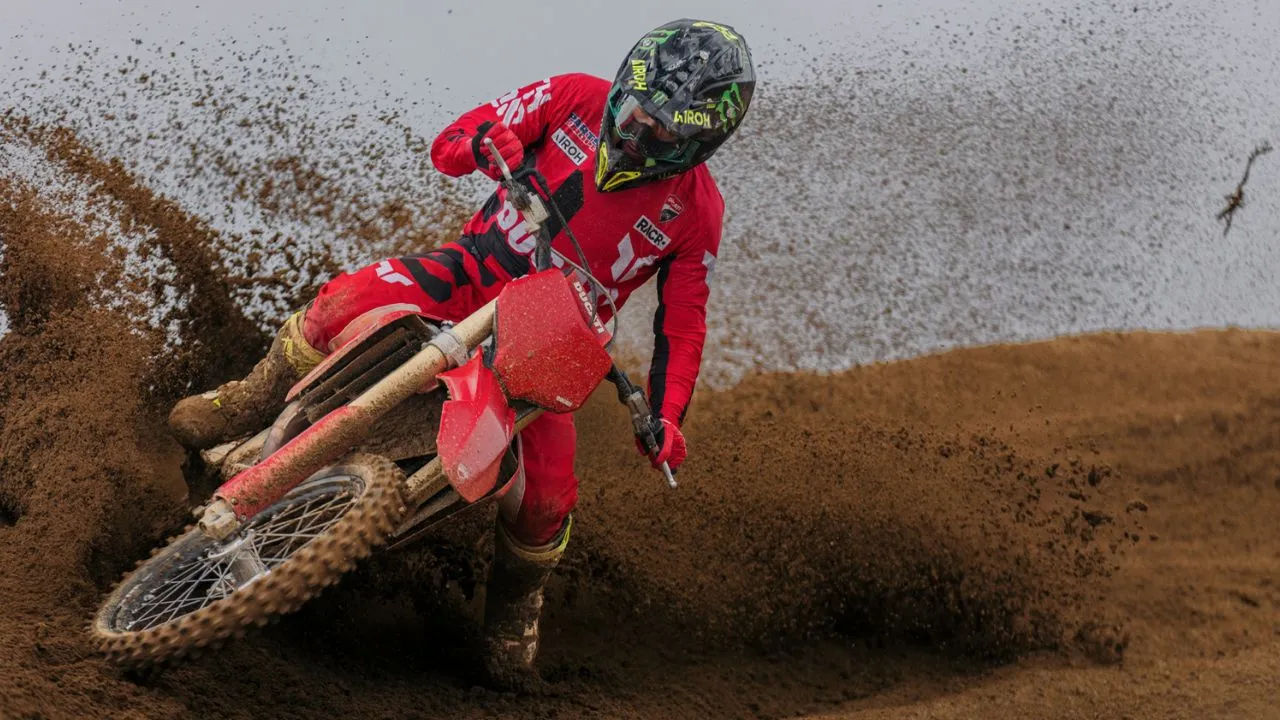
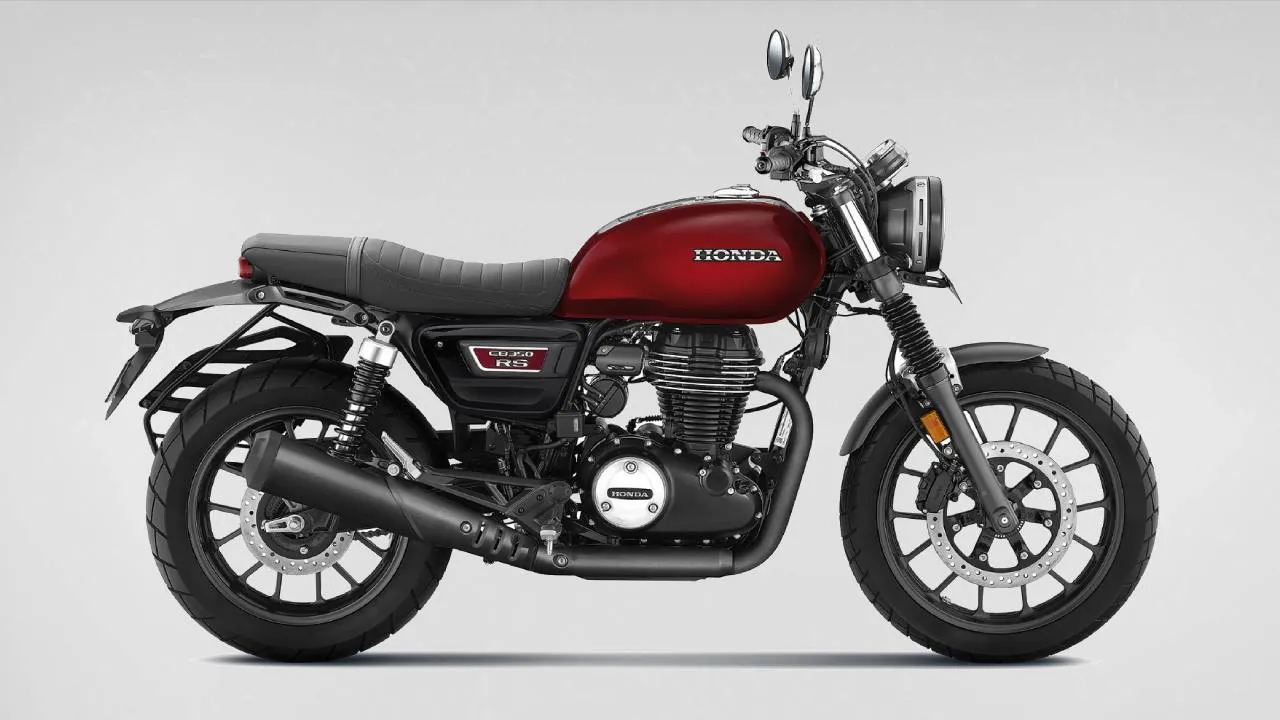
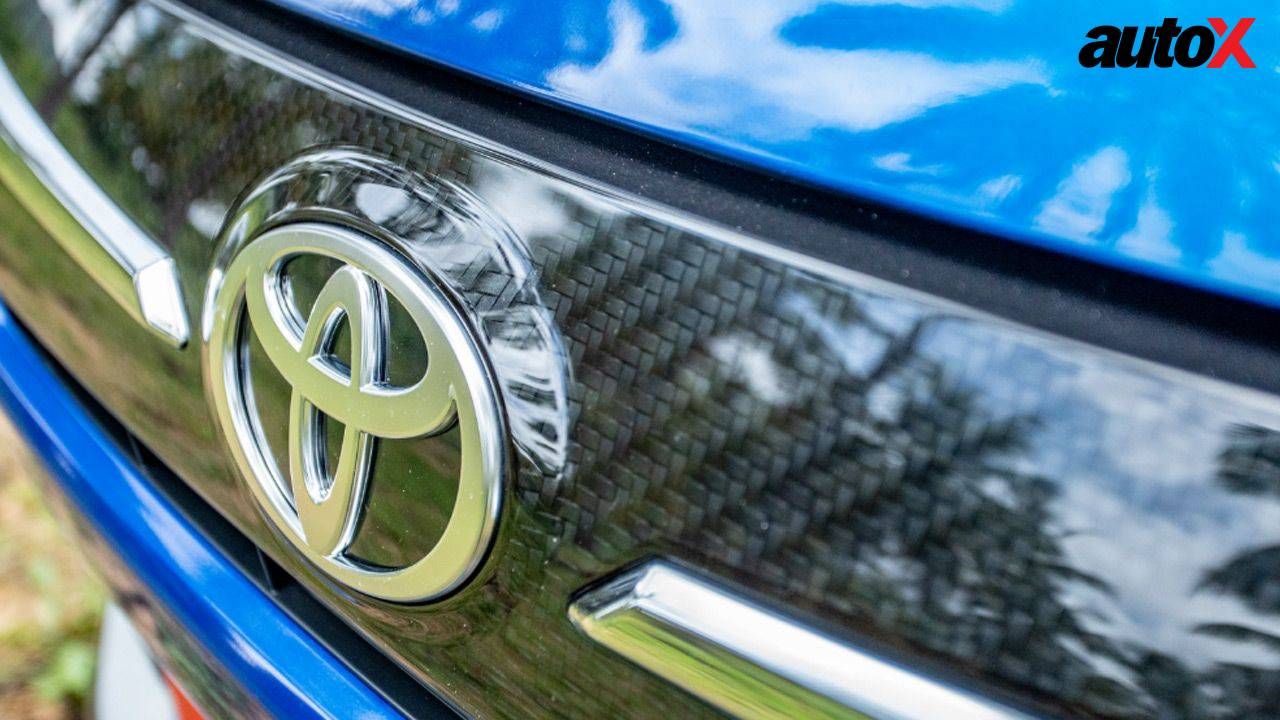





Write your Comment on